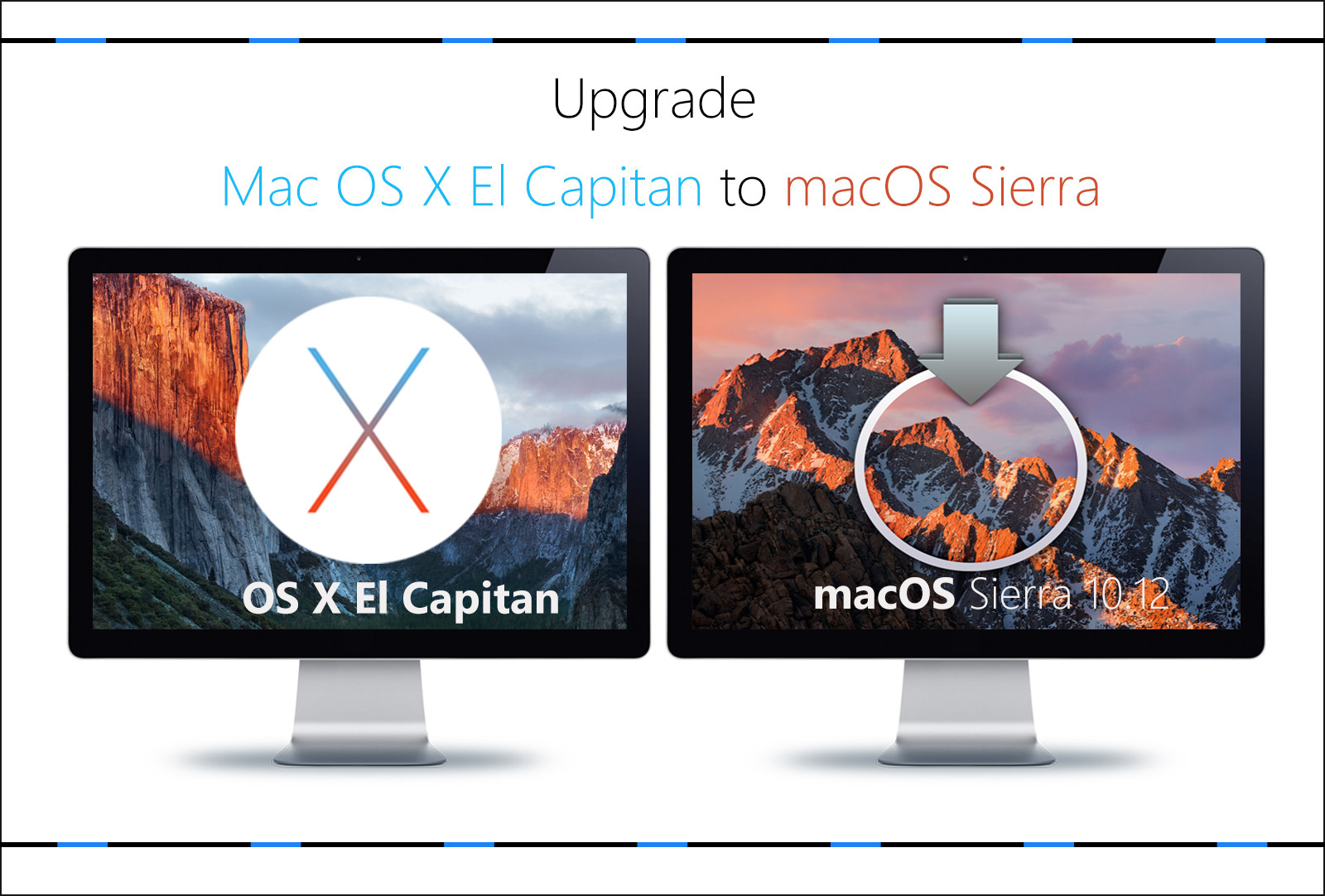Os X El Capitan Not Installing
To get the latest features and maintain the security, stability, compatibility and performance of your Mac, it's important to keep your software up to date. Apple recommends that you always use the latest macOS that is compatible with your Mac.
First, the OS X installer should run automatically, but if not then you can try running it manually: Go to the Applications folder Open the program called “Install OS X El Capitan” Follow the on-screen instructions.
Find out how to upgrade to macOS Big Sur, the latest version of macOS.
- VM Type: Mac OS X and Version: Mac OS X 10.11 El Capitan (64-bit) 5) Suggest use wired Internet, not WiFi, for initial download/updates, etc. 6) Run CMD window as Administrator when entering command-line commands. 7) May need to start Virtualbox as Administrator. 8) Be patient during initial boot up.
- Then, you clicked on the folder now in here, select the image file of Mac OS X El Capitan and click on the “Open” button. Select Mac OS X El Capitan ISO file. Within this step, you’re finished with the settings. Now is the time to make a digital machine to Mac OS X El Capitan. Consequently, you have to press on Create.
- How to Perform a Clean Install of OS X El Capitan. OS X El Capitan (OS X 10.11) offers two installation methods. This guide focuses on the 'clean install' method. When you install El Capitan on your current startup drive with the clean install method, you erase everything on the drive. That includes OS X, your user data, and personal files.
- Click 'Download'. Click continue and it will download the El Capitan installer. When the installer is downloaded it will automatically launch. As it launches Quit the installer at the first question. That will leave you with a 'Install OS X El Capitan' installer app (about 6 GB) in the Applications folder.
Check compatibility
The version of macOS that came with your Mac is the earliest version it can use. For example, if your Mac came with macOS Big Sur, it will not accept installation of macOS Catalina or earlier.

If a macOS can't be used on your Mac, the App Store or installer will let you know. For example, it may say that it's not compatible with this device or it's too old to be opened on this version of macOS. To confirm compatibility before downloading, check the minimum hardware requirements:
- macOS Catalina 10.15 hardware requirements
- macOS Mojave 10.14 hardware requirements
- macOS High Sierra 10.13 hardware requirements
- macOS Sierra 10.12 hardware requirements
- OS X El Capitan 10.11 hardware requirements
- OS X Yosemite 10.10 hardware requirements
Download macOS using Safari on your Mac

Safari uses these links to find the old installers in the App Store. After being downloaded from the App Store, the installer will open automatically.
- macOS Catalina 10.15 can upgrade Mojave, High Sierra, Sierra, El Capitan, Yosemite or Mavericks
- macOS Mojave 10.14 can upgrade High Sierra, Sierra, El Capitan, Yosemite, Mavericks or Mountain Lion
- macOS High Sierra 10.13 can upgrade Sierra, El Capitan, Yosemite, Mavericks or Mountain Lion
Safari will download the following older installers as a disk image named InstallOS.dmg or InstallMacOSX.dmg. Open the disk image, then open the .pkg installer inside the disk image. It will install an app named Install [Version Name]. Open that app from your Applications folder to start installing the operating system.
- macOS Sierra 10.12 can upgrade El Capitan, Yosemite, Mavericks, Mountain Lion or Lion
- OS X El Capitan 10.11 can upgrade Yosemite, Mavericks, Mountain Lion, Lion or Snow Leopard
- OS X Yosemite 10.10can upgrade Mavericks, Mountain Lion, Lion or Snow Leopard
Installing El Capiton on an old Mac Book Pro today, I received the error:
OS X could not be installed on your computer
No packages were eligible for install. Contact the software manufacturer for assistance.
Quit the installer to restart your computer and try again.
I checked Apple’s support Matrix (it is a very old macbook pro) at https://support.apple.com/kb/SP728?locale=en_GB and it was listed as supported.
After lots of Googling and investigation, I discovered that the date and time were not set to current, the macbook thought it was year 2000.
Os X El Capitan Install
You can easily reset the time and date by following the steps below:
- Click Utilities on the menu bar
- Select Terminal
- Type date
- Confirm the date is wrong
- Type date 062112422016 (example: June 21st 12:42 2016)
- Exit terminal
- Click Restart
Once the Date and time are configured you will be able to install OS X.


Mac Os El Capitan Install
Easy fix, for a ridiculous error!